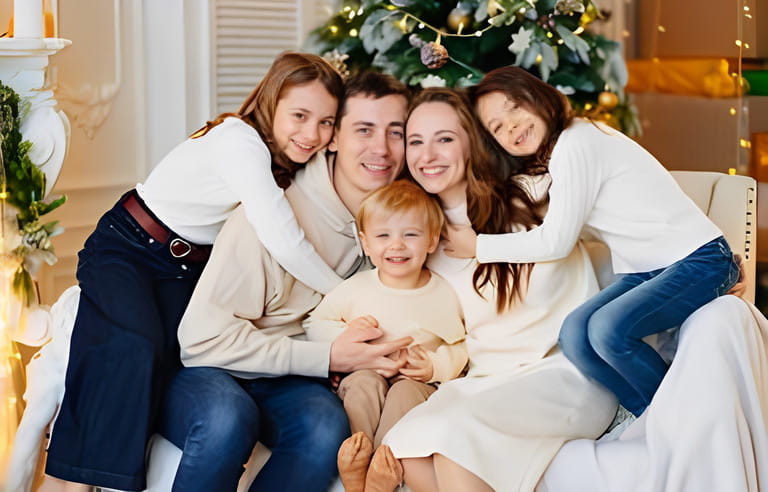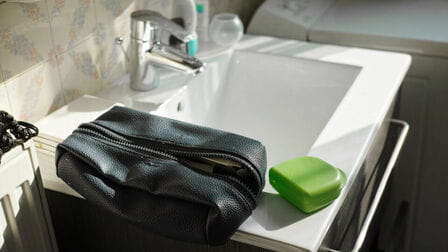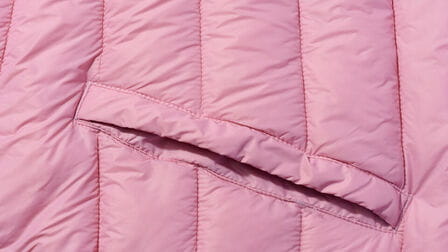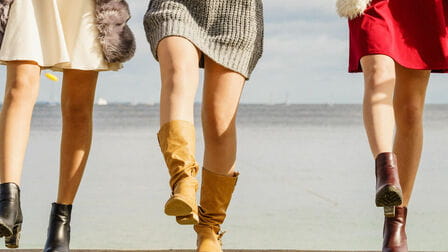Family photos capture precious memories and document the growth of loved ones over time. A common question that arises is whether families should coordinate outfits by wearing the same color. There are pros and cons to this approach, and the decision ultimately depends on preferences and desired aesthetics.
Advantages of Wearing the Same Color
Wearing the same color can create visual unity, simplify planning, and contribute to a timeless look.
Visual Unity
Matching outfits bring together families with many ages, sizes, and personalities. It creates a cohesive, harmonious look that highlights togetherness. This can be especially effective for large, blended, or complex families.
For example, the Smith family has 5 children from previous marriages, ages 2-16. Having them all wear blue creates a unified look despite differences in age and size. It focuses the viewer on their relationships rather than contrasting appearances.
Simplicity

Choosing one color simplifies planning and reduces stress. Rather than coordinating many outfits, families can have everyone wear the same color. This saves time for busy families.
The Robinsons, for instance, have 7 family members with packed schedules. Instead of agonizing over individual outfits, they simply decide to wear black. This reduces time and energy spent on planning so they can focus on enjoying their time together.
Timelessness
Solid, neutral colors create classic, enduring looks. While trendy styles date photos, muted hues remain beautiful for years. This benefits families who want lasting images.
For example, the Lopez family takes annual photos featuring multiple generations. Choosing a subdued sage green pallet lends a timeless quality so photos from each year seamlessly blend together. Future generations will cherish these classic portraits.
Disadvantages of Wearing the Same Color
Potential downsides to uniform colors include diminished individuality, monotony, and insufficient contrast.
Lack of Individuality
Matching color schemes suppress personal style and individuality. This can frustrate family members who enjoy expressing uniqueness through clothing.
The Patel children have distinct fashion senses they love highlighting. Forcing them into identical outfits would dampen their enthusiasm for family photos by concealing self-expression. Preserving personal choice takes priority for this creative clan.
Potential Monotony

Carelessly chosen colors can create monotonous, uninteresting images. This pitfall is exacerbated in abundant families where variation in skin tone and hair color is low.
For the Davis’ family of redheads, wearing red or orange would result in a vibrant but repetitive look. Introducing contrasting hues adds needed diversity.
Lack of Contrast
Insufficient contrast occurs when family members blend with each other or the background. This makes distinguishing individuals difficult. Low contrast creates dull, lifeless images.
Last year, the Thompson family wore beige and took photos outdoors during golden hour. Beautiful lighting accentuated flawless skin but family members disappeared into the scenery. More differentiation was essential.
Color Coordination Alternatives
Families can use relaxed color coordination for visual unity with individuality. Complementary colors create striking contrast. Neutrals and patterns provide versatility.
Color Coordination
Rather than matching perfectly, families can coordinate related hues in different shades, tones, or tints. This allows personalized outfits while unifying aesthetics.
The Martinez family opts for a nautical theme encompassing navy, royal blue, sky blue, and turquoise. This cohesive palette provides ample flexibility for individual preferences.
Complementary Colors

Colors opposite each other on the color wheel (like purple and yellow) create visual dynamism when juxtaposed. This contrast modernizes classics.
The Park family enjoys playing with traditional color pairings by choosing vibrant rather than muted versions. Their crimson and lime green outfits make for lively, stimulating portraits.
Neutrals and Patterns
Timeless neutrals like black, white, and gray balance colorful personality. Intriguing patterns can embed distinctiveness while limiting loudness.
For their 25th anniversary, the Nelsons wanted a classic black-and-white palette spiced up with modern geometric prints selected by each member. This blended continuity, tradition, and originality.
Conclusion
Deciding whether families should wear matching colors depends on their priorities and desired aesthetics. Craving harmony benefits from uniformity while valuing individuality embraces flexibility. Most families balance these competing tensions, ensuring their images feel cohesive, interesting, personal, and timeless by incorporating color coordination and complementary elements. Regardless of the approach, the unifying goal remains authentically capturing precious familial connections through photography.












